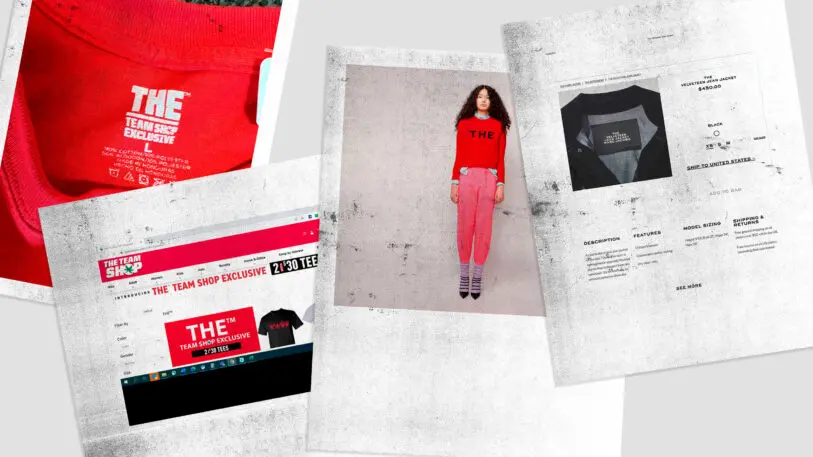The is one of the most common words in the English language. But two separate entities want consumers to associate them with the word.
Fashion designer Marc Jacobs and Ohio State University separately filed applications with the U.S. Patent and Trademark Office in 2019 to trademark “the,” which would allow them to emblazon it on merchandise like T-shirts and bags—and prohibit anyone else from doing so. This week, the USPTO granted the university the trademark, and while it may seem ridiculous to try to trademark such a common word, experts say it’s actually a clever bit of branding.
In some ways, the entire concept of sticking “THE” on a shirt began as a joke. Back in 1986, Ohio State University wanted to move away from the acronym OSU because it’s also used by Oregon State University and Oklahoma State University, which creates a lot of confusion. So the school tried to rebrand itself as The Ohio State University in a tongue-in-cheek way, encouraging others to do the same.
By the mid-’90s, athletes and alumni were using the article the when referring to Ohio State; NFL players used the term in television broadcasts; and Saturday Night Live parodied it. Over the past few years, in the final iteration of the joke, people have just used “THE” to refer to the school, including on T-shirts.

“This is about two brands experimenting with language to distinguish themselves,” says Alexandra J. Roberts, a professor at the University of New Hampshire School of Law who specializes in trademark law. “These approaches are tongue in cheek, irreverent, and humorous. They’re thinking a little outside the box, trying to broaden the set of things people associate with the brand.”
In 2019, the Ohio State University and Marc Jacobs each wanted to codify their relationship to the word. Marc Jacobs filed the application with the USPTO to trademark “The,” and shortly thereafter Ohio State University did the same. This week, the university was granted the trademark. But Roberts explains that the USPTO is particularly concerned with preventing consumer confusion, so it specifies that the university must use the word in such a way that consumers understand that it’s an official part of the branding. In this case, it could mean putting “THE” on a shirt label or price tag to make it clear that it’s more than just a cute saying. “The whole point of the trademark is for people to see the symbol or word and associate it with a single source or brand,” she says.
While it’s a big win for Ohio State to receive this trademark, ESPN points out that it might not be the only university that will be able to use “THE” on apparel. For the first five years that a trademark is registered, other parties can petition to cancel it on the grounds that it doesn’t yet function as a trademark.
And Marc Jacobs, for its part, may still get a trademark for the word, Roberts says, since the application is still pending. Over the past three years, the company and the university have chosen not to fight over the word but rather to work with each other—and the USPTO—so they can each use it. The key is for them to use the trademark in different enough ways that the consumer couldn’t confuse an Ohio State University product with a Marc Jacobs product.
“The two trademarks could coexist,” Roberts says, pointing out that there are many brands with the same name, like Yale University and Yale Locks. “But it would be much easier to imagine them coexisting if Marc Jacobs had the trademark for handbags, and the university had the trademark for shirts and hats.”
Roberts says trademarking “THE” is an example of clever branding that also creates new associations in consumers’ minds. “By trademarking ‘THE,’ they are creating a spin-off brand,” she says. “It means that there are even more ways that consumers can relate to the brand. By formalizing their protection of the word, nobody else can do something similar.”
Recognize your brand’s excellence by applying to this year’s Brands That Matter Awards before the early-rate deadline, May 3.
